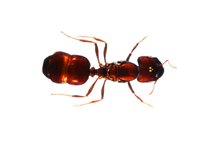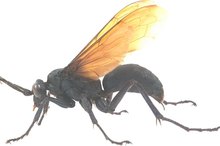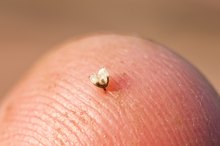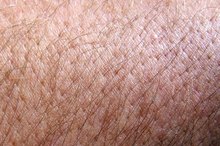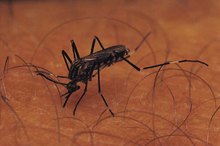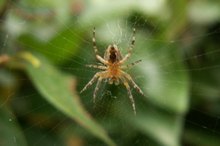Insect Bites That Leave Stingers
Insect bites are more common in the summer months, when people wear less clothing and enjoy working or relaxing in backyards and sports like hunting or fishing 3. Bites from insects that leave stingers behind require proper treatment to avoid infections or complications. Learn the signs of an allergic reaction to these bites and when to call 911 for emergency medical help.
If you are experiencing serious medical symptoms, seek emergency treatment immediately.
Insects with Stingers
Not all insects with stingers leave them behind after they bite you. Bumble bees, wasps, hornets and yellow jackets all inject their venom into your body with stingers, but only honey bees leave the stinger embedded in your flesh. Attached to these stingers are poison sacs. They continue to send venom into your skin after the bee has been killed or left the site. A stinging sensation, redness and swelling are common reactions to a bite. These symptoms usually stop after 20 to 30 minutes.
- Not all insects with stingers leave them behind after they bite you.
Removing the Stinger
How to Help a Bull Ant Bite
Learn More
Once the bee has gone, locate the stinger. The quicker stingers are removed, the less venom enters your body. If you use tweezers to remove it, don't squeeze it or you will push more venom into your skin. Remove it by grasping the stinger firmly in the middle, not at the top. Use a sharp-edged tool or blade to hook the stinger and gently pull it out of the skin. Do not press downwards during removal. This will cut the stinger off, leaving some parts still embedded in your skin.
- Once the bee has gone, locate the stinger.
- If you use tweezers to remove it, don't squeeze it or you will push more venom into your skin.
Infections from Bites
A foreign object such as a stinger entering your body can cause an infection. Infections from honey bee stings are common. Signs the wound has become infected are increasing pain and sensitivity to pressure at the site of the sting, red streaks radiating from the location and a raised, red and swollen area around the bite. Generalized symptoms include fever and headaches. Inflamed, enlarged or tender lumps in the nearest armpit or the groin area also indicate your bite is infected. Seek professional medical help for these symptoms.
- A foreign object such as a stinger entering your body can cause an infection.
- Signs the wound has become infected are increasing pain and sensitivity to pressure at the site of the sting, red streaks radiating from the location and a raised, red and swollen area around the bite.
Allergies to Bites
How to Tell If You Have a Wasp Bite or Sting
Learn More
Those with a minor allergy to bees feel the initial sting and see redness in the bite area. More serious allergies cause symptoms, such as:
- swelling in parts of the body with no bites
- breathing difficulties
- generalized itching
- throbbing headaches
- faintness or dizziness
To aid anyone with a severe allergy to bee stings, call the emergency services immediately after the bite has occurred, or instruct a trusted person to call ahead of your arrival, if you are transporting the victim. Cold compresses over the bite location and lowering bitten parts below the heart level slow the spread of venom in the body. Call 911 immediately for bite victims who turn pale, experience breathing difficulties or become mentally confused. They may be entering a state of shock.
- Those with a minor allergy to bees feel the initial sting and see redness in the bite area.
- More serious allergies cause symptoms, such as: * swelling in parts of the body with no bites
* breathing difficulties
* generalized itching
* throbbing headaches
* faintness or dizziness To aid anyone with a severe allergy to bee stings, call the emergency services immediately after the bite has occurred, or instruct a trusted person to call ahead of your arrival, if you are transporting the victim.
Related Articles
References
- "Health" magazine; BanThe Tan; Les Odel May 19, 2010
- Utah Mountain Biking: Bug Bites
- Doctor Clinic: Insect Bites And Stings
- Visscher PK, Vetter RS, Camazine S. Removing bee stings. Lancet. 1996;348(9023):301-2. doi:10.1016/s0140-6736(96)01367-0
- Venkataramanappa SK, Gowda A, Raju S, Harihar V. An unusual case of bilateral empyema associated with bee sting. Case Rep Med. 2014;2014:985720. doi:10.1155/2014/985720
- Abtahi, S., Razmjoo, Abtahi, Roomizadeh, & Mohammadi. (2011). Management of corneal bee sting. Clinical Ophthalmology, 1697. doi:10.2147/opth.s26919
Writer Bio
Asba Lee is a former IT consultant who specialized in network administration and application development. Now a writer and academic instructor, Lee instructs GMAT, GRE and SAT courses. Lee loves to research and writes to learn new things, testing his thoughts and opinions.
